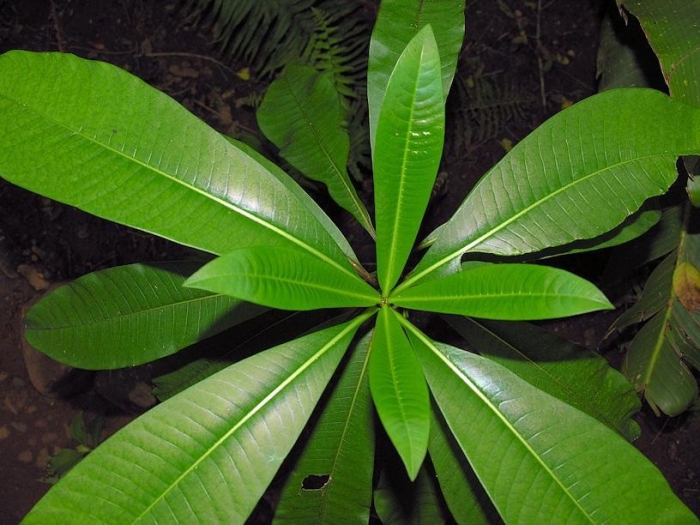Quinine Tree
(Rauvolfia caffra)
Quinine Tree (Rauvolfia caffra)
/
/

Wynand Uys
CC BY 4.0
Image By:
Wynand Uys
Recorded By:
Copyright:
CC BY 4.0
Copyright Notice:
Photo by: Wynand Uys | License Type: CC BY 4.0 | License URL: http://creativecommons.org/licenses/by/4.0/ | Rights Holder: Wynand Uys | Publisher: iNaturalist | Date Created: 2006-03-25T12:52:51-08:00 |

























Estimated Native Range
Summary
Rauvolfia caffra, commonly known as the Quinine Tree, is a deciduous tree native to a variety of habitats including riverine forests, coastal forests, and open woodlands from the Eastern Cape of South Africa through to tropical Africa. It typically grows to a height of 15-20 meters with a spread of 10-15 meters. The Quinine Tree has a straight trunk with a dark, rough bark and a dense, rounded crown. It bears glossy, green leaves and small, tubular, white flowers that bloom from September to November, which are followed by black, fleshy fruits that attract birds.
The Quinine Tree is valued for its shade and ornamental qualities, as well as its medicinal uses. It is often planted in large gardens, parks, and along streets. In cultivation, it prefers full sun to partial shade, requires moderate water, and thrives in well-drained soils. It is relatively low-maintenance once established. However, gardeners should be aware that the tree’s roots can be aggressive and may interfere with nearby structures or pavements. The Quinine Tree’s bark is traditionally used to treat malaria and high blood pressure, among other conditions.CC BY-SA 4.0
The Quinine Tree is valued for its shade and ornamental qualities, as well as its medicinal uses. It is often planted in large gardens, parks, and along streets. In cultivation, it prefers full sun to partial shade, requires moderate water, and thrives in well-drained soils. It is relatively low-maintenance once established. However, gardeners should be aware that the tree’s roots can be aggressive and may interfere with nearby structures or pavements. The Quinine Tree’s bark is traditionally used to treat malaria and high blood pressure, among other conditions.CC BY-SA 4.0
Plant Description
- Plant Type: Tree
- Height: 20-50 feet
- Width: 15-30 feet
- Growth Rate: Moderate
- Flower Color: White
- Flowering Season: Spring, Summer
- Leaf Retention: Evergreen
Growth Requirements
- Sun: Full Sun, Part Shade
- Water: Medium
- Drainage: Medium, Fast
Common Uses
Bird Garden, Butterfly Garden, Low Maintenance
Natural Habitat
native to a variety of habitats including riverine forests, coastal forests, and open woodlands from the Eastern Cape of South Africa through to tropical Africa
Other Names
Common Names: Quinine Tree, African Peach-Tree, African Quinine Tree
Scientific Names: , Rauvolfia caffra, Rauvolfia caffra var. natalensis, Rauvolfia caffra var. natalensis, Rauvolfia goetzei, Rauvolfia gonioclada, Rauvolfia gonioclada, Rauvolfia inebrians, Rauvolfia leucopoda, Rauvolfia leucopoda
GBIF Accepted Name: